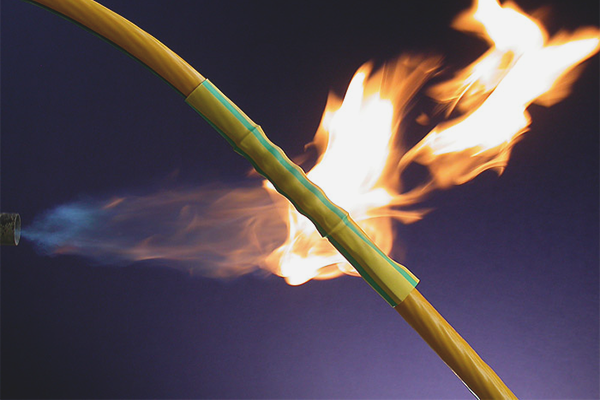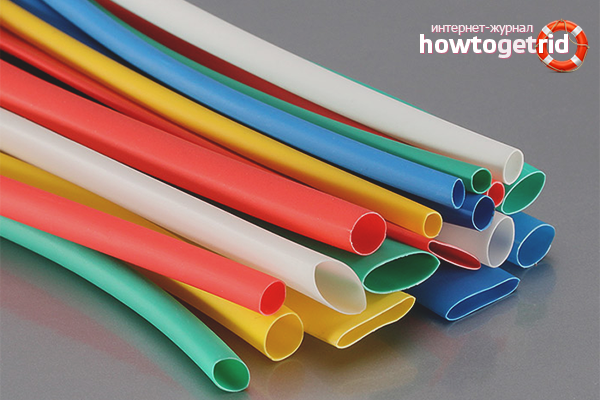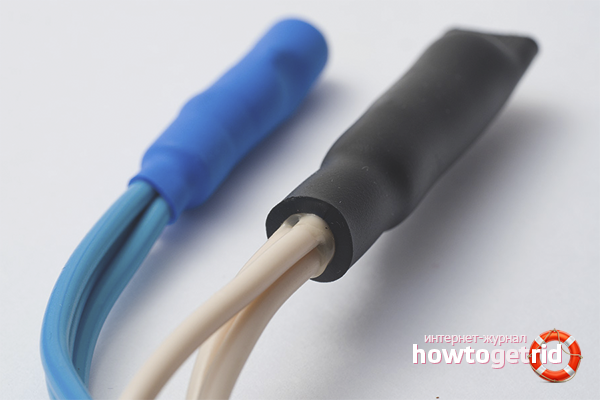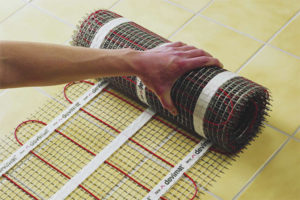The content of the article
The heat shrinkable tube is a device that can change the diameter, shrink under the influence of high temperatures. In the process of shrinkage, it will cover the object placed in it, and will provide protection: isolation and against mechanical damage. The scope of application of tubes is radio electronics, automotive, used as an insulator of wires, to protect metal pipes from corrosion, as well as for antenna equipment.
Main statements
In simple terms, heat shrinkable tubing (HERE) is a replacement for standard blue electrical tape. The only thing that they can not be used in areas with ornate curves and where there is a different thickness in the course of "following".
Their main advantage is the ability to shrink when heated, it provides the necessary insulation and mechanical protection.The cost of the tubes is relatively low, different colors provide the usability, including the most common ones for cables - red, blue, green, yellow, striped. With them, you can not only isolate, but also mark the wires to facilitate further work with them.
I would like to dwell on the labeling, since this is one of the important areas for the use of HERE. They are widely used when necessary to label three-phase electrical circuits. They use red, yellow and green colors. Marking the same wires that correspond to a specific phase, it is possible to facilitate the process of operation. Yellow-green banding is standard for grounding.
Material characteristics
Before you use HERE, you need to choose them correctly, and for this you need to know the main characteristics. These include:
- Ability to shrink - this ratio varies from 1: 2 to 1: 6.
- Adhesive layer.
- The composition of the tube - it can be PVC, polyolefin, elastomer, fluorine polymer.
- Color - one-color, combined.
And, also resistance to similar influences - temperature, chemical exposure, light stabilization, resistance to petroleum products.
There is also a separation according to the strength of the tube walls, according to this indicator HERE are thick-, medium- and thin-walled. The first two types are combined into one group and are characterized by a wall thickness of 1.5-4.5 mm, so it will become as a result of shrinkage. Indicators vary from 2: 1 to 6: 1. It is in them that there is an adhesive inner layer.
Thin-walled can be transparent or colored, with a wall thickness of up to 1 mm after shrinkage, the narrowing factor is from 2: 1 to 4: 1. Used as insulators and as markers. They often have special characteristics, among them:
- Self-extinguishing
- Lack of halogen emissions in case of fire.
- Heat resistance.
- Low heat shrink temperature.
- Improved UV resistance.
- Resistance to mechanical and chemical effects.
Important recommendations when using HERE
- Denoting the size of the tube, manufacturers indicate two numbers through a fraction: one is the diameter before shrinkage, the second - after. Additional marking may characterize the color and length of the cut.
- When you choose HERE, it is important to consider that its diameter should be larger than the product for which it will be used.For shrinkage to occur correctly, its diameter after shrinkage must be slightly less than the diameter of the product on which it is mounted.
- Before you use HERE, you need to inspect it for no damage and burrs. If there are scratches or burrs, the use of such tubes should be abandoned.
- If you plan to use HERE with an adhesive layer, then the surface on which they will be seated must be cleaned and degreased. To avoid damage to the tube on the product should not be places that can be potentially dangerous to HERE. If there are sharp edges, they need to be sanded and leveled.
Terms of Use HERE
First you need to prepare the tools. For this fit any sources that will give the necessary heat flux. The minimum temperature should be +70 degrees. Necessary indicators are specified when marking. It depends on the type of tube: for thick-walled, the temperature must be higher, for thin-walled - lower. If you plan to use a building hair dryer, then the requirements for it - identifying the required temperature. If you use gas burners, it is importantso that they have a soft yellow flame. Matches, lighters can be options for use as a heat source.
Shrinking technique:
- Preparation of the surface, which includes degreasing, stripping and heating. Depending on the material, emery paper or a cloth soaked with solvent can be used for this.
- The choice of the tube in accordance with the requirements, warming it, which is especially important for thick-walled tubes. You need to warm it up without putting it on the place of “permanent residence” and not up to the maximum temperature, but by half, that is, if the temperature of full shrinkage is 120 degrees, then it should be warmed up to 60.
- Next, the tube is placed on an insulated object, the surface. On the heating device set the desired temperature.
- Shrinkage should start from the middle. After sitting down evenly in the center, move left and right.
- It should be heated evenly, moving the heat source along it, it will not allow local overheating, and therefore damage HERE.
- If there is glue on the inner surface, then as a result of shrinkage it must flow out. After shrinking, the item should be left alone to cool.
Application HERE is a modern and convenient solution. To feel all the benefits of this isolator, you need to use it correctly. We have tried to explain in as much detail as possible everything that needs to be known for the successful application of HERE.
Video: how to use shrink tube













To send